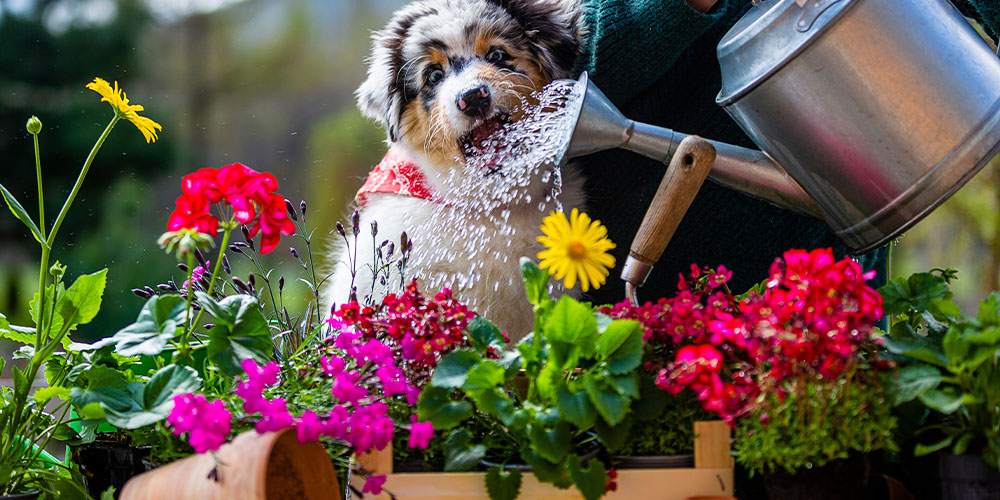Watering your garden is very important. It helps your plants grow strong and healthy. But, there are right and wrong ways to water your garden. This guide will show you the best techniques for garden watering. Let’s get started!
Why Proper Watering is Important
Proper watering keeps plants healthy. It helps them grow strong roots. When plants get the right amount of water, they can fight off diseases. They also produce more flowers and fruits.
How Much Water Do Plants Need?
Different plants need different amounts of water. Some plants like a lot of water. Others like less. Here is a simple table to help you:
| Plant Type | Water Needs |
|---|---|
| Cacti and Succulents | Very Little |
| Vegetables | Moderate |
| Flowering Plants | Moderate to High |
| Trees and Shrubs | Moderate |
Best Time to Water Your Garden
The best time to water your garden is early in the morning. The sun is not too hot. The water can soak into the soil. This helps the plants absorb the water before it evaporates.

Credit: millcreekgardens.com
Watering Techniques
There are many ways to water your garden. Here are some of the best techniques:
1. Hand Watering
Hand watering is simple. You use a hose or a watering can. This technique is good for small gardens. It lets you control the amount of water each plant gets.
2. Drip Irrigation
Drip irrigation is very efficient. It uses tubes with small holes. The water drips slowly to the roots. This method saves water and keeps the soil moist.
3. Soaker Hoses
Soaker hoses are similar to drip irrigation. The hoses have tiny holes. Water seeps out slowly. This technique is great for garden beds and rows of plants.
4. Sprinkler Systems
Sprinkler systems are good for large gardens. They spray water over a wide area. You can set timers to water at the best times.
5. Watering Globes
Watering globes are glass or plastic balls. They slowly release water into the soil. These are best for potted plants.

Credit: www.youtube.com
Watering Tips for Different Garden Areas
Different parts of your garden need different watering methods. Here are some tips:
Lawns
Lawns need deep watering. Water your lawn until the soil is wet 6 inches deep. This helps the grass roots grow deep and strong.
Flower Beds
Flower beds need even moisture. Drip irrigation or soaker hoses work best. Water in the morning to reduce evaporation.
Vegetable Gardens
Vegetable gardens need regular watering. Keep the soil moist but not soggy. Drip irrigation or hand watering works well.
Containers And Pots
Containers and pots dry out quickly. Check the soil daily. Water when the top inch of soil is dry. Use watering globes for consistent moisture.
Signs of Overwatering and Underwatering
It’s important to know if your plants are getting too much or too little water. Here are some signs:
Overwatering
- Yellow or wilting leaves
- Soft, mushy roots
- Fungus or mold on the soil
Underwatering
- Dry, crispy leaves
- Slow growth
- Wilting plants
Water Conservation Tips
Water is precious. It’s important to use it wisely. Here are some tips to save water:
- Use mulch to keep soil moist
- Water early in the morning
- Fix leaks in hoses and sprinklers
- Use drip irrigation or soaker hoses
- Choose drought-tolerant plants
Frequently Asked Questions
What Are The Best Times To Water Plants?
Early morning or late evening is ideal. It reduces water evaporation and ensures plants absorb moisture efficiently.
How Much Water Do Gardens Need Daily?
Most gardens need about 1 inch of water per week. Adjust based on weather and plant needs.
Should I Water My Garden Every Day?
No, watering deeply but less frequently is better. It encourages deeper root growth and healthier plants.
Is Rainwater Better For Garden Plants?
Yes, rainwater is free of chemicals found in tap water. It’s more beneficial for garden plants.
Conclusion
Watering your garden properly is very important. It keeps your plants healthy and beautiful. Use the right techniques for your garden. Follow the tips in this guide. Your garden will thrive!
